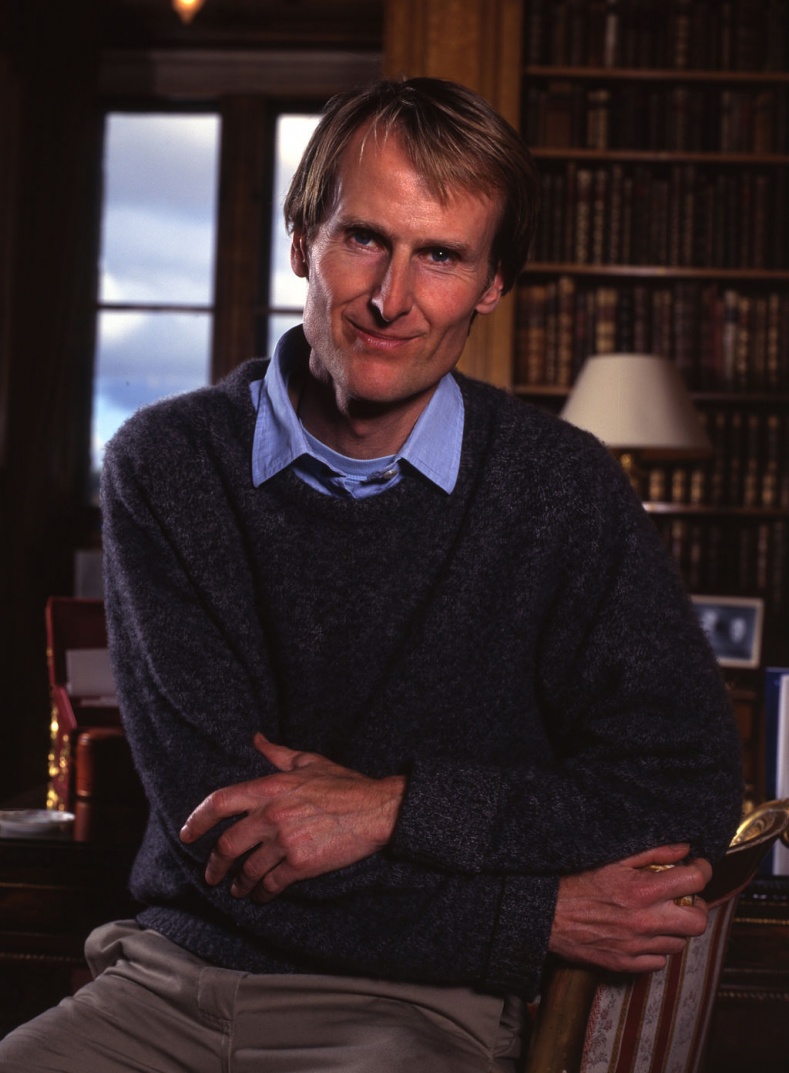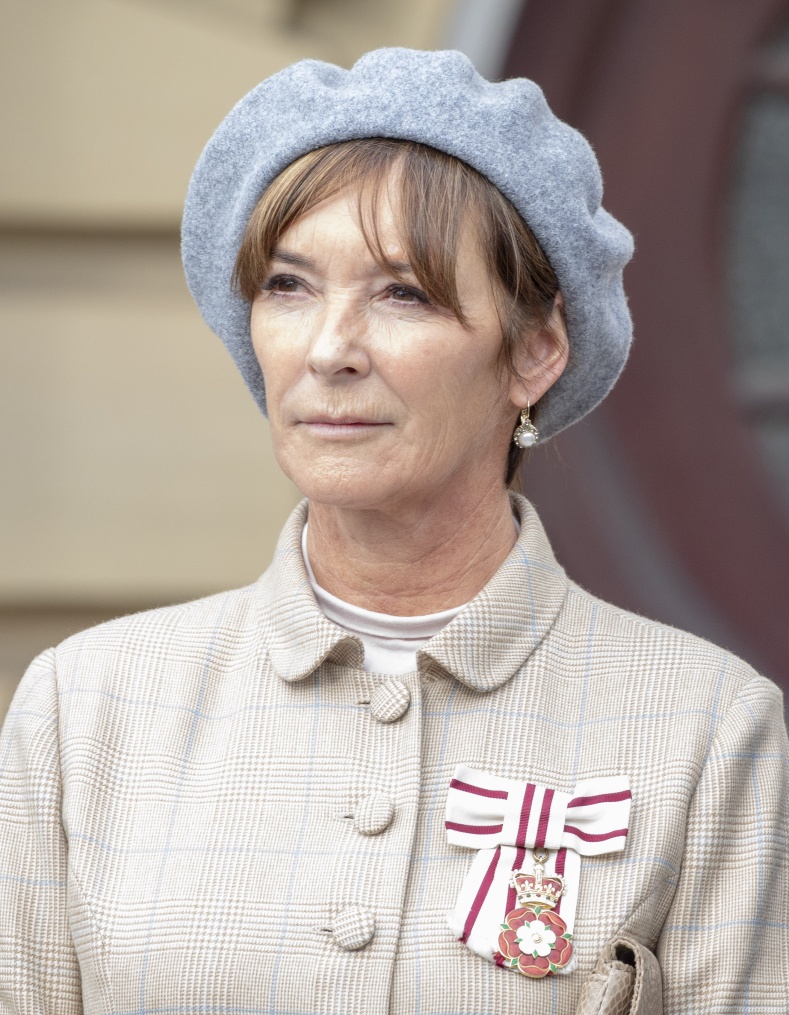

Percy, Ralph George Algernon and Isobel Jane Miller
b. 1956 and b. 1958
12th Duke and Duchess of Northumberland
The Percy family of Alnwick Castle in Northumberland is descended from William de Percy (d. 1096), who, in 1067 as a young man, joined the army of William the Conqueror following his successful invasion of England in 1066. William de Percy is thought to have come from a middle-ranking landed family located in Percy-en-Auge in Normandy. He was in effect an adventurer who sought fame and fortune through participation in the subjugation of another country. The reward for military service was the gift of landed estates by the new King. William de Percy clearly impressed by his deeds and abilities, such that in the Domesday Book of 1086 he is recorded as holding approximately 80,000 acres scattered over 160 townships, mainly in Yorkshire. Land-owning at this level conferred upon him baronial status and a large rental income. It also brought the obligation to serve the Crown faithfully and to provide, when called upon, a specified number of fully armed and equipped knights on horseback.
It is a remarkable fact, 950 years after the Norman Conquest, that the descendants of William de Percy remain landowners on the same grand scale. The 12th Duke of Northumberland, Ralph Percy, who inherited the dukedom on the death of his elder brother, Henry (1953 – 1995), owns 132,000 acres of land, mainly rented out to tenant farmers. Retaining control of so much land over the centuries was due in equal measure to good judgement and good fortune. Continuity demanded a long string of male heirs and continued royal favour. The Percys almost came to grief on both counts. The family faced succession crises in 1175 and 1670 following the deaths respectively of William de Percy II and Josceline Percy, 11th Earl of Northumberland. In each case, survival depended on the restoration of the Percy name via the female line. On the second occasion, 80 years elapsed between the demise of Josceline and the adoption of the Percy name in 1750 by Sir Hugh Smithson, husband of a Percy descendant, Elizabeth Seymour. It was Hugh who became 1st Duke of Northumberland in 1766. Equally threatening to continuity were the times the Percys fell out of favour with the reigning monarch. On the first occasion, it took amazing skills on the part of the 4th Earl to secure forgiveness for the doomed rebellion led by the 3rd Earl’s son, Hotspur, against Henry IV. On the second occasion, when the Percys were implicated in the 1537 uprising against Henry VIII, popularly known as the Pilgrimage of Grace, it was only after the Catholic Queen Mary came to the throne in 1553 that the family’s title and estates were restored in favour of Thomas, 7th Earl of Northumberland.
Few families can boast such a rich and colourful heritage. Along the way, the Percy family played a prominent role in defending England’s border against Scottish encroachment. As a result, the locus of its estates shifted northward away from Yorkshire and its impressive properties in London (Northumberland House), Middlesex (Syon Park), and West Sussex (Petworth). It was not until 1750, however, when the first Duke and Duchess of Northumberland made Alnwick Castle their principal residence that the Percys definitively became a Northumbrian family. In medieval times, the castle had formed part of the defensive system managed by the Percys as Wardens of the Marches to repel the Scots. Following the Union of the Crowns in 1603 that function ceased and the castle fell into disrepair. Under the 1st Duke, the castle was extensively restored and the grounds laid out by Lancelot ‘Capability’ Brown. The 4th Duke made further significant improvements before he died in 1865, leaving Alnwick substantially as it is seen today.
For great aristocratic families like the Percys, the journeys taken by the philanthropically minded are very different from those of entrepreneurs who make a fortune and then feel impelled to ‘give back’ to improve the lives of others less fortunate. The mission of aristocratic landowners is not transformational, but, as in the words of Ralph Percy, to “protect, preserve and restore”. Over the centuries following the Norman Conquest, the hierarchical social order that evolved became progressively less dependent on military might, and more institutionalised, based on social conventions, underpinned by social practices and the rule of law. The aristocracy became more learned, with its menfolk educated at boarding schools and the ancient universities of Oxford and Cambridge. It also became more proficient in the arts of managing and improving estates, extracting more from the land and the minerals found beneath the surface. In the case of the Percy family, the educational pattern repeated over successive generations has been Eton followed by Oxford. The 12th Duke, a qualified chartered surveyor, is no exception.
The social compact between the aristocracy and ordinary folk in modern Britain continues to evolve, but the trajectory is constant. The inequalities implicit in the system – economic, social, symbolic and political – endure because the aristocracy accepts the responsibilities that go with privilege and social distinction. In times of war, for example, it has meant providing leadership on the battlefield and making the inevitable sacrifices that entails. The 9th Duke of Northumberland, George Percy (1912 -1940), for example, joined the army on the outbreak of the Second World War as a lieutenant in the 3rd Battalion of the Grenadier Guards. In May 1940 he was killed by machine gun fire as his regiment retreated toward Dunkirk, the first of twenty peers or heirs to peerages killed in action during the Second World War.
The obligations of the British aristocracy continue today, but once more re-modelled to suit the circumstances of the times, in much the same way that the role of the Royal Family has changed. In essence, the role is symbolic, embodying the notion of a pillar of society, and encapsulating all that is virtuous in British values and the British way of life. Members of the British aristocracy, whilst acknowledged as occupying the uppermost rungs society, are nevertheless expected to reach down, empathising and engaging with others, ceremonially and through participation in a variety of social ventures. Ralph Percy and his wife Jane (née Richard), whom he married in 1979, are most accomplished in this regard. They serve as patrons, presidents or chairpersons of a wide range of societies and institutions, and their name is often first to appear on donor lists for good causes. Hosting dinners, making speeches and attending prestigious events as esteemed guests, adding lustre and appeal to social gatherings, is a special form of philanthropic service. Appointed Lord Lieutenant of Northumberland in 2009, the first woman to hold this distinction, Jane Percy is officially the Queen’s representative in the county, charged with upholding the dignity of the Crown.
These duties sit alongside the everyday functions the Duke and Duchess perform as parents to four children and managers of various business and philanthropic ventures. The Duke is the owner of Northumberland Estates, which has large farming and property interests. It also runs Alnwick Castle, a location for the Harry Potter films and episodes of the popular television drama Downton Abbey. The Duchess is the visionary behind the Alnwick Garden Trust, the charity that since 2003 has re-modelled and developed the 42-acre Alnwick garden as one of Northumberland’s main tourist attractions. The Duke and Duchess donated the site and £9 million to make this possible. The garden has been a great success, creating 200 new jobs, attracting 332,000 visitors in 2017, and contributing £236.8 million to the local economy since its opening to the public.
Through the garden and other activities, the Percy family is continuing a long philanthropic tradition. The 10th Duke, Ralph’s father, Hugh (1914 -1988), was a keen agriculturalist, serving as Chairman of the Agricultural Research Council (1958-68) and the Agricultural Economic Development Committee (1971-78). He became the first Chancellor of Newcastle University in 1962, where he generously endowed the Duke of Northumberland Chair in Rural Economy. In response to a fresh appeal in support of the Chair in 2014, Ralph Percy made a further very substantial donation. The 10th Duke also established the 10th Duke of Northumberland Charity, which continues with Ralph and his younger brother, Lord James Percy (b. 1965), as trustees. It awarded £115,630 in grants in the accounting year 2016/17, including £37,000 to Northumberland Church of England Academy, of which Ralph Percy is a sponsor, and £30,000 to the Alnwick Playhouse.
Jane Percy was awarded The Variety Club Silver Heart, its highest accolade, for her services to charity and disabled and disadvantaged children in the North East. Ralph Percy is President of the Community Foundation Tyne & Wear and Northumberland where the couple also holds a family fund which was set up as the founding gift to the charity’s endowment challenge when it expanded to serve the county in the 1990s.
References
Charity Commission. (2018). The 10th Duke of Northumberland’s Charity, Available here (Accessed: 17/09/2018).
Companies House. (2018). Northumberland Estates Ltd Annual Accounts 2017, Available here (Accessed: 17/09/2018).
Hollingshead, I. (2011). Cage fighting At Alnwick Castle, The Telegraph, Available here (Accessed: 17/09/2018).
Lomas, R. (1999). A Power in the Land: The Percys. Tuckwell Press: East Lothian.
Wikipedia. (2018). Ralph George Algernon Percy, 12th Duke of Northumberland, Available here (Accessed: 17/09/2018).